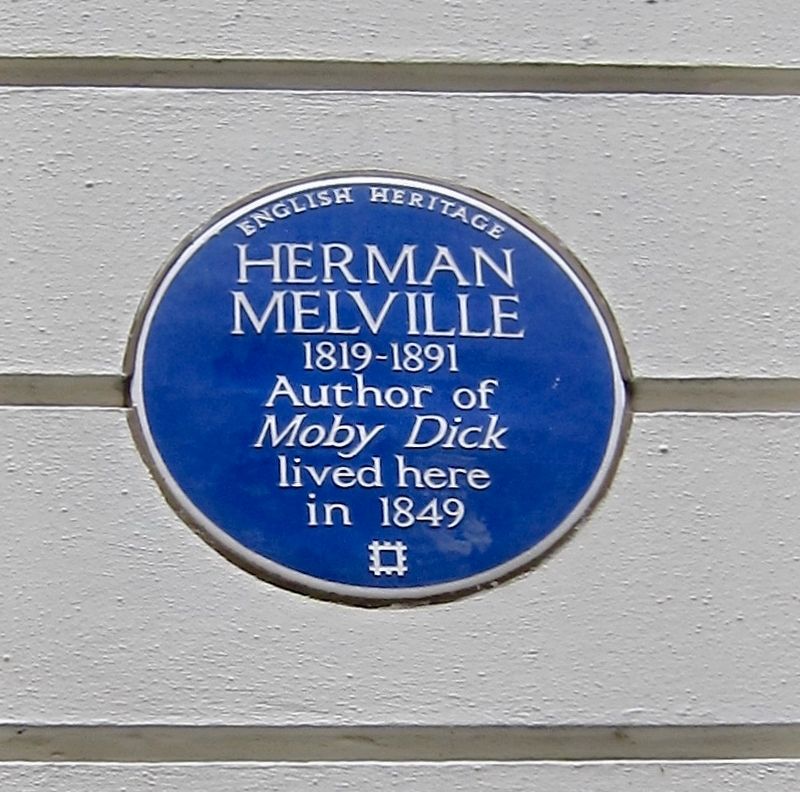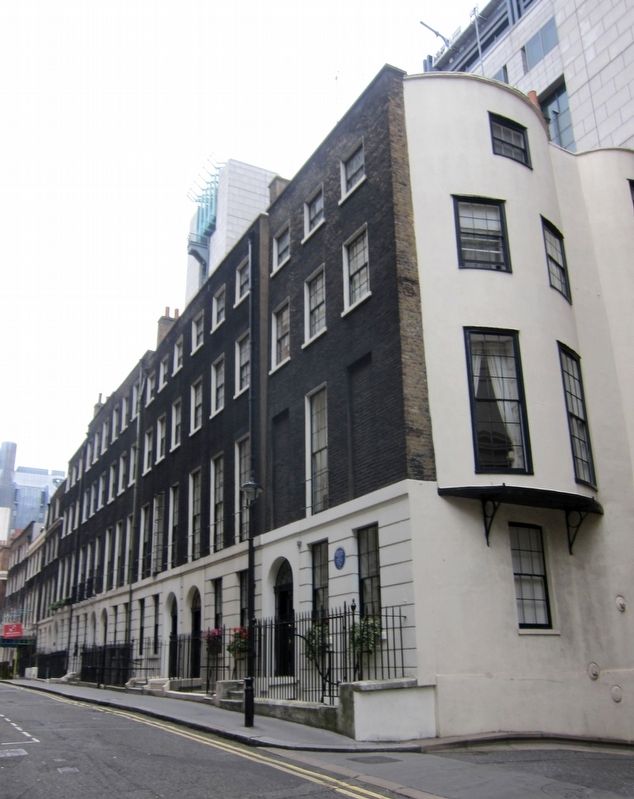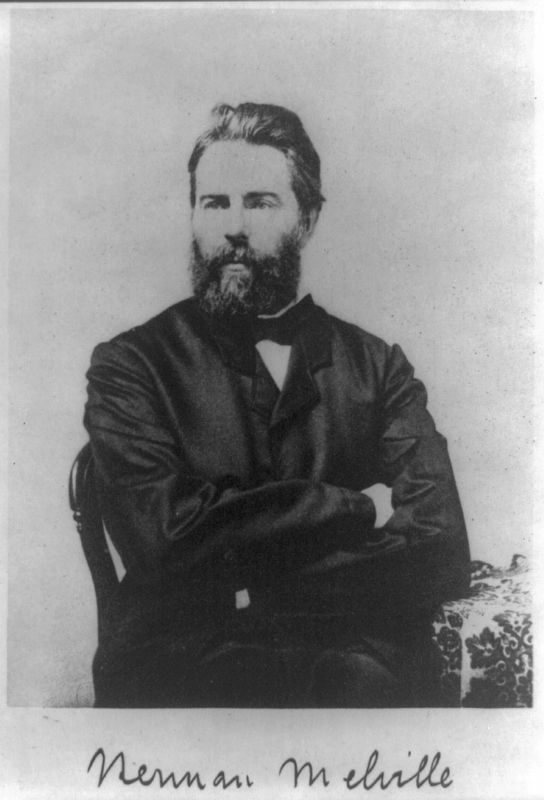City of Westminster in Greater London, England, United Kingdom — Northwestern Europe (the British Isles)
Herman Melville
1819-1891
Moby Dick
lived here
in 1849
Erected 2005 by English Heritage.
Topics. This historical marker is listed in this topic list: Arts, Letters, Music. A significant historical year for this entry is 1849.
Location. 51° 30.427′ N, 0° 7.445′ W. Marker is in City of Westminster, England, in Greater London. Marker is at the intersection of Craven Street and Northumberland Avenue, on the left when traveling south on Craven Street. Touch for map. Marker is at or near this postal address: 25 Craven Street, City of Westminster, England WC2N 5NT, United Kingdom. Touch for directions.
Other nearby markers. At least 8 other markers are within walking distance of this marker. Benjamin Franklin (about 90 meters away, measured in a direct line); Kipling House (about 120 meters away); Rudyard Kipling (about 120 meters away); William Nicholson (about 120 meters away); Royal Tank Regiment Memorial (about 120 meters away); York Watergate (about 120 meters away); Victoria Embankment Gardens (about 120 meters away); Samuel Pepys & etc. (about 120 meters away). Touch for a list and map of all markers in City of Westminster.
Also see . . .
1. Herman Melville (Wikipedia). "Herman Melville (August 1, 1819 – September 28, 1891) was an American novelist, short story writer, and poet of the American Renaissance period. His best known works include Typee (1846), a romantic account of his experiences in Polynesian life, and his whaling novel Moby-Dick (1851). His work was almost forgotten during his last 30 years. His writing draws on his experience at sea as a common sailor, exploration of literature and philosophy, and engagement in the contradictions of American society in a period of rapid change. He developed a complex, baroque style; the vocabulary is rich and original, a strong sense of rhythm infuses the elaborate sentences, the imagery is often mystical or ironic, and the abundance of allusion extends to biblical scripture, myth, philosophy, literature, and the visual arts." (Submitted on November 2, 2017.)
2. Moby-Dick; or, The Whale (Melville.org). "Call me Ishmael..." (Submitted on November 2, 2017.)
Credits. This page was last revised on January 27, 2022. It was originally submitted on November 2, 2017, by Andrew Ruppenstein of Lamorinda, California. This page has been viewed 148 times since then and 8 times this year. Photos: 1, 2, 3. submitted on November 2, 2017, by Andrew Ruppenstein of Lamorinda, California.


